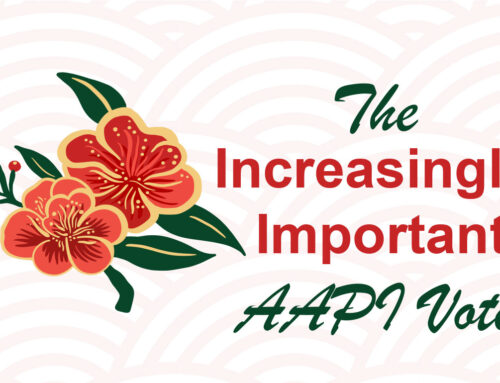By Tom Bonier
On September 18th, voting will begin in the 2020 general election. On that date, a few states will allow voters to begin casting their ballots. From that point onward, more and more states will open early and mail balloting. Every single state and the District of Columbia will afford some number of voters the opportunity to vote before Election Day, most of them significantly expanding access to these opportunities relative to prior elections. This will have a profound effect on our ability to report on the composition of the electorate, well before Election Day, as well as our ability to understand the results that will be reported by state and local election officials, beginning on election night, but realistically extending days and possibly weeks beyond. This report will explore the ways in which we expect to be able to report on these factors, and how the media should take into account these dramatic changes in our electoral system.
Voting early (collectively early in person, as well as mail balloting) has been on the rise in recent elections. In 2012, 36% of all ballots cast in the presidential election were cast before Election Day. That’s 46 million votes. In 2016 that number surged to over 57 million votes, or 41% of all ballots cast. In the upcoming 2020 election, given the leaps forward many states have made in making early/mail voting accessible to a wider audience, along with the existing upward trend in adoption of these voting methods, it is reasonable to assume that well more than a majority of all votes will be cast before Election Day. That suggests we’re likely to see 75 million or more votes cast before November 3rd. Again, this will have a profound effect on our understanding of the electorate, well before November 3rd, and must be taken into account as election results are reported on election night and beyond.
Analysis – What we will (and won’t) know
Our ability to analyze the early/mail vote actually begins well before the voting opens in certain states on September 18th. Many states are already reporting on mail balloting requests at the individual level. As of today, at TargetSmart, we have tracked over 6 million requests for mail ballots from voters across the country. We are able to match these requests back to our national voter file, affording us the opportunity to better understand the potential political implications. Our typical analysis considers the partisan distribution of these voters, as well as key demographic indicators (age, race/ethnicity, sex). We also view this dataset in the context of past turnout. It’s not particularly impactful to see a surge in requests among the most likely voters, those who have cast a ballot regularly in previous elections, but when we see spikes among new voters, or those who only vote sporadically, we dig deeper to assess if there is a likely partisan advantage for one side or the other among these surge voters.
Speaking of partisanship, we are often asked how we know who these candidates are supporting. In short, we don’t. The secrecy of the ballots is always protected. We don’t know how someone votes, we just know if they voted. That said, by relying on a combination of partisan voter registration, in those states offering voters that opportunity, and modeled partisanship, we have a good sense of the probability that a voter is supporting one party or another.
Between now and Election Day we will continue to track mail ballot requests across the country. It’s important to note – not every state reports the same data the same way. While we are able to collect this information in most states and localities, it is always possible that some will simply not report, at the individual level, who has requested a mail ballot. Once voting actually begins to roll out across the country, starting in a few states first on September 18th, we will add even richer data to our analysis – who has actually returned their ballots.
We will then be able to perform the same level of analysis as detailed above for the mail ballot requests on those who have already returned their ballot. This is important. While the analysis of mail ballot requests suffers from the uncertainty of whether or not the ballot will be returned, this analysis does not. These are votes which have been returned to the election officials, waiting to be counted (more on that later).
Soon after, many states will begin to allow voters to cast a ballot early in person. This was an increasingly popular option for millions of voters in the 2016 election, with over 17 million voters casting a ballot as such. Again, it’s reasonable to assume this number will only grow in 2020, with more states offering this option as a safer alternative to in-person voting on Election Day. We will collect the same individual level data on these voters, allowing us to perform the same analysis on partisanship, demographics, and past voting behavior.
Normally the public relies on exit polls as the first (albeit not generally accurate) sense of the composition of the electorate. In this election, it is reasonable to assume that, by the end of October, we will be able to confidently state the composition of the electorate for the tens of millions of votes that will have been cast by then, with minute detail. We will know if one party has built a likely cushion in turnout, and by how much.
Reporting on Election Night
Many of us engage in the same election night routine – obsessively reloading websites displaying the election returns by state, gradually narrowing our focus to the states most likely to be decisive. As we zoom in to a more micro level, we consider what percent of the votes have not yet been counted, and in which portion of the state they will emerge from, with an implicit assessment of whether they will be favorable enough for one side or the other in order to change the outcome of the election. That’s a tricky process, in a good year, one that will be made much trickier this year with so many votes being cast early, and uncertainty as to exactly when those votes will be counted and how they will be reported.
At this early stage in the reporting on likely turnout, it seems Democrats are poised to dominate the vote among those ballots cast before Election Day. Likely by margins the likes of which we have never seen. The President has railed against mail voting, resulting in his supporters abandoning any plans of utilizing that option to cast their ballots. This will have a profound effect on how the results appear on election night, depending on how each state reports the results of those votes cast early. While some states allow their local officials to count those mail ballots before Election Day, most do not. That will mean millions of ballots will only begin to be processed after the polls close, in a process that is likely to be long and drawn out, especially in the states with little to no experience as such. Remember the New York primary, where votes were still being counted a month after Election Day.
The NCSL has produced a helpful resource detailing when states can legally begin counting those ballots cast before Election Day. As you’ll see, it varies widely from state to state.
In those states where mail and early votes will be counted early, as polls close and results begin to come in, you are likely to see large vote totals with low precinct reporting totals. In those cases it will be obvious that what you are seeing is including early/mail votes. But if the only metric the media displays is the percent of precincts reporting results, without any sense of the mail and early ballots counted, we will have no true sense of the dynamic. Say a state reports 90% of precincts reporting, showing one candidate with a significant lead. The “percent precincts reporting” metric obscures the fact that hundreds of thousands of early and mail ballots have not been counted yet and in reality we are not close to having a sense of the likely winner. In this circumstance, a candidate might claim an insurmountable margin of victory and declare themselves the winner.
Given that we will know, from our voter file data, approximately how many ballots were cast before Election Day (the only votes we may be missing would be those few which were postmarked by Election Day but have not been received and therefore reported yet), it should be possible to report on the percent of expected votes counted, rather than relying on the traditional percent of precincts reporting, alone. We urge the media to consider using such a metric on election night, so as to not feed into a false narrative of an insurmountable lead for a candidate based solely on in-person Election Day votes.
In the end, getting it right will be more important than getting it first. While it is certainly conceivable that we will see a decisive result on election night, it’s not necessarily likely. It will take time to count every vote, and also to exhaust possible legal challenges with a reasonable expectation of millions of rejected ballots, and of course the potential for recounts. We will be reporting everything we know as we track the various voter turnout indicators over the closing weeks of this election, but we’ll all need to be patient.





